Your mom uses one type. Your coworker, another. Your sister swears by a brand you’ve never heard of. And your closest friend forgot to put theirs on this morning (gasp!).
With so many options, how do you choose the perfect facial sunscreen for your skin type and lifestyle? Today, we’re answering your most common questions. From SPF and UV rays to layering and expiration dates, we’ll help you find your new favorite sunscreen and fit it into your skincare routine with ease.
What is sunscreen (and do I really need it every day)?
Let’s start with the basics: sunscreen is a product formulated to protect your skin from the harmful effects of solar radiation—specifically UVA and UVB rays. Its main job is to help prevent immediate damage like sunburn, as well as long-term effects like photoaging and the risk of developing skin cancer.
Sunscreens use filters that absorb, reflect, or scatter the sun’s rays, helping to shield your skin. But not all types of solar radiation affect your skin the same way. Some of the sun’s rays can pass through clouds and windows. Others reflect off surfaces such as water and snow. And some can make your skin age faster than others.
This is where the type of sunscreen you choose can make all the difference. And it also makes daily use essential for healthy, happy skin.
How sunscreen works
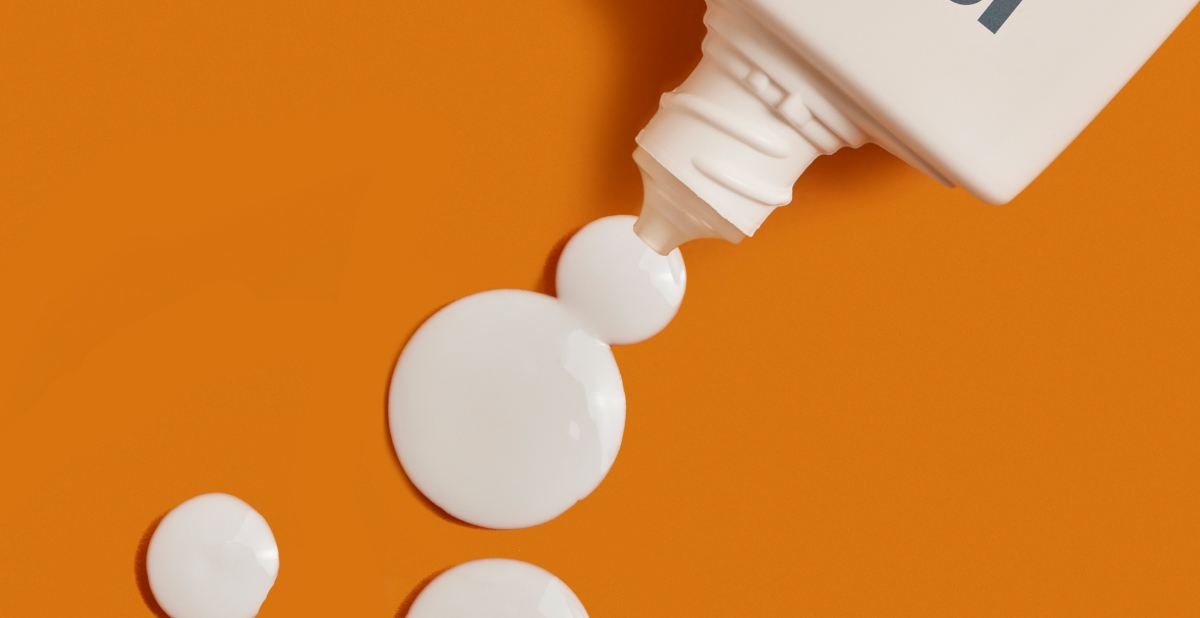
First, let’s talk about the solar spectrum. The solar spectrum is made up of different kinds of radiation, and a couple of them might sound familiar:
- UVA rays: Often referred to as aging rays, as these rays are responsible for premature skin aging (photoaging), including dark spots and wrinkles. This type of ray is present all year round and can pass through glass, reaching your skin while you’re at home, driving, or working at the office.
- UVB rays: Think B for burning, as these rays are the main cause of sunburn and DNA damage to skin cells. Their intensity varies depending on the time of day, season, location, and altitude.
Broad spectrum sunscreen protects against UVA and UVB radiation—helping to reduce the risk of sunburn, photoaging, and most importantly, skin cancer.
- Blue light: Reaching us both indoors and outdoors, we’re exposed to solar blue light every day. Recent studies have linked it to the appearance of dark spots or uneven pigmentation, especially in people with deeper skin tones.
- Infrared: Also known as heat rays, you feel the sun’s warmth when your skin absorbs this type of radiation. But it can also cause oxidative damage in your skin—driving the signs of photoaging.
Some innovative sunscreens can also help defend against blue light and infrared or heat damage.
Can sunscreen help combat skin aging?

Your skin has a memory, and sun damage adds up over the years. Every time you’re exposed to UV radiation, free radicals are created. These unstable molecules break down skin proteins and accelerate visible signs of aging.
While your body naturally fights back with antioxidants, too much sun can cause oxidative stress, leading to fine lines, wrinkles, and discoloration. Fortunately, sunscreen can help protect your skin against the photoaging effects of the sun—especially formulas packed with added antioxidants.
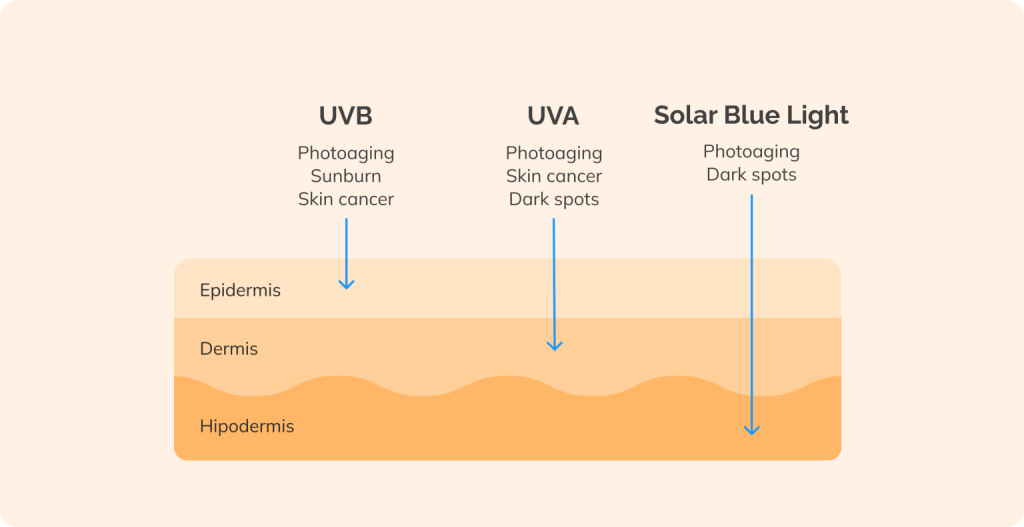
If I don’t burn, should I still wear sunscreen?
Yes! Unfortunately, there’s no such thing as “safe tanning” or immunity from the the sun’s effects. No matter your skin tone, unprotected exposure can damage skin cells, speed up the natural aging process, and increase skin cancer risk. Do your best to protect yourself with sunscreen and good habits, such as seeking shade or wearing a hat.
How to choose a sunscreen
Types, textures, and benefits. These are the starting points for finding the best sunscreen for your skin. Now, let’s dig into each factor.
Which is better, SPF 30, 40 or 50+?
SPF, or Sun Protection Factor, doesn’t measure time—it’s a comparison of how much more protection your skin has with sunscreen than without. For example, if your skin would normally burn after 10 minutes in the sun, an SPF 30 would extend that time to about 300 minutes, assuming you apply enough and reapply regularly.
But there are a few things to note here. This timeframe depends on your skin type—fair skin types can burn faster than average. Moreover, most people don’t apply enough sunscreen, in amount or frequency.
The American Academy of Dermatology recommends choosing SPF 30 or higher and reapplying at least every two hours. Beyond that, it’s about understanding your skin, the amount of time you spend in the sun, and personal preference.
When it comes to SPF, the number matters—but applying enough, and often, matters more.
Is there a difference between face sunscreen and body sunscreen?
The major difference between body and face sunscreen is texture and formulation. Sunscreen shouldn’t feel like a chore to wear, and the best choice is one you’ll wear every day. For face sunscreens, look for an ultralight emulsion formula. Opt for one that melts into skin easily, without leaving a greasy residue or white cast.
Which ISDIN sunscreen is right for you?
Tinted versus invisible. Mineral or chemical protection. With so many choices, the most important thing is making sure your skin is in good hands.
Look for a sunscreen with broad spectrum protection, high SPF, and a lightweight texture that absorbs quickly. ISDIN facial sunscreens check all these boxes and more. Let’s find your perfect match:
360° protection, invisible coverage & 12-hour hydration:* Fusion Water MAGIC
This advanced formula boasts broad spectrum SPF 40 sun protection while helping to defend against free radical damage from blue light, pollution, infrared, and heat. All with a lightweight texture you’ll love wearing.
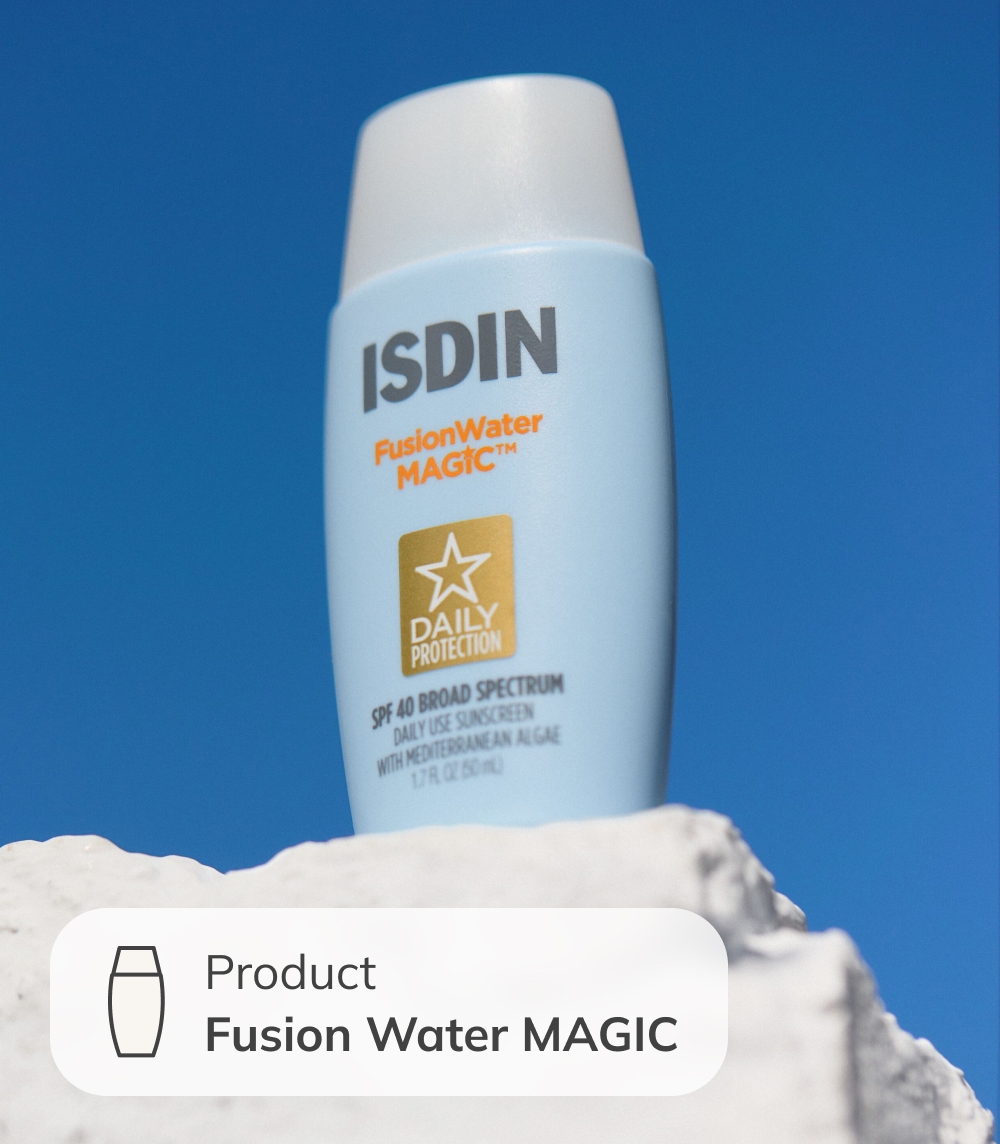
This is your sunscreen if:
- You’re looking for a hydrating finish that works well under makeup or on its own
- You’d like an invisible, ultralight texture with no white cast, pilling, or greasy feeling
- You’re focused on helping to prevent your first fine lines and wrinkles
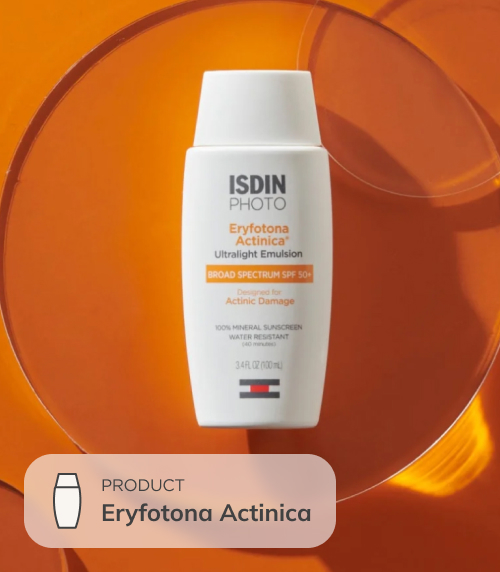
Premium all-mineral protection: Eryfotona Actinica
Eryfotona Actinica is an ultralight, all-mineral SPF 50+ sunscreen designed to both protect your skin from sun damage and help repair existing damage. Its classic, invisible finish melts right into skin.
This is your sunscreen if:
- You’ve noticed a few signs of sun damage and photoaging and want to soften them
- You’re looking for very high SPF coverage with an invisible finish
- You’d prefer a water-resisitant suscreen
- All-mineral formulas are important to you
Premium all-mineral tinted protection: Eryfotona Ageless
Eryfotona Ageless is an all-mineral tinted SPF 50 sunscreen designed to protect the skin while targeting existing and expected signs of skin aging due to the sun. It contains a powerful blend of peptides and antioxidants, including peptide Q10 and vitamin E.
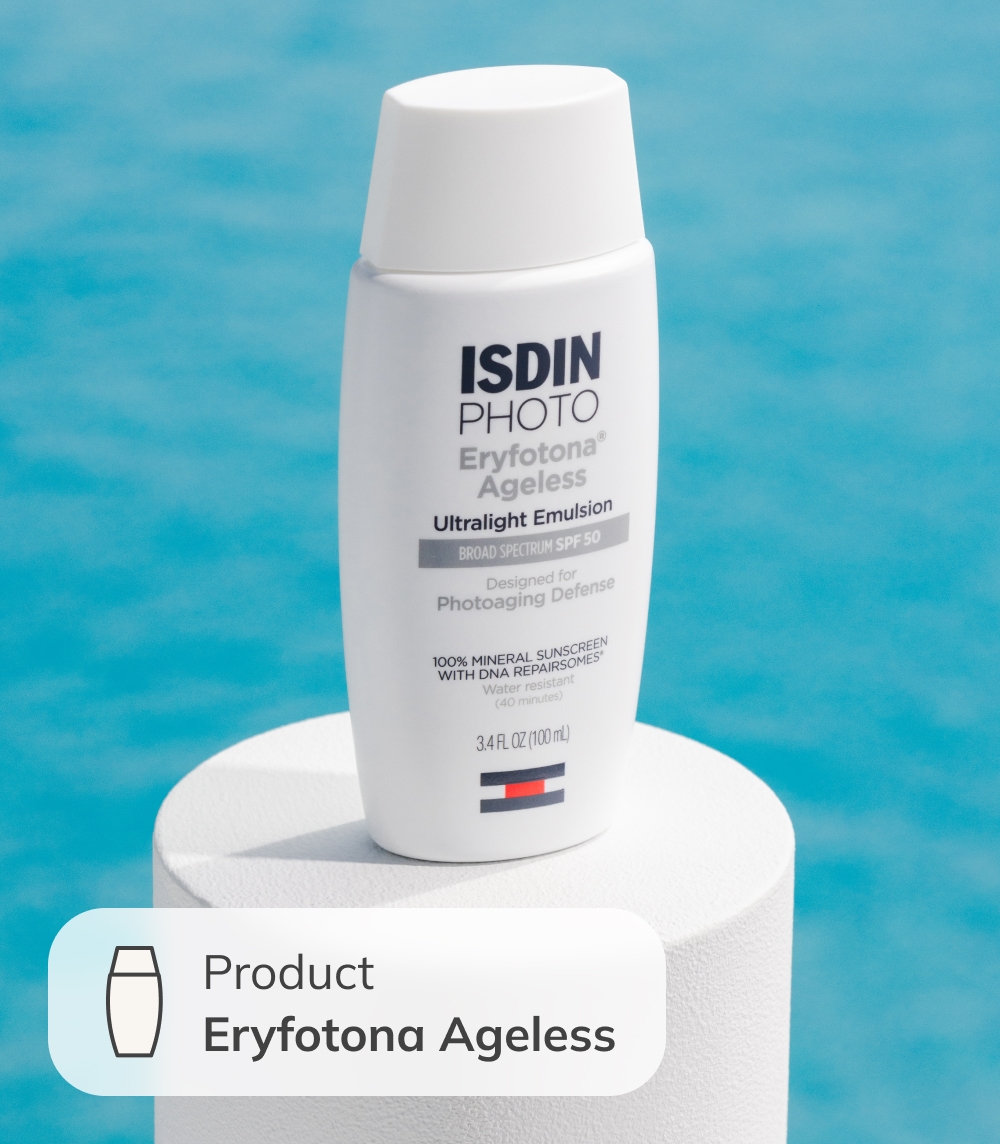
This is your sunscreen if:
- You’ve noticed a few signs of sun damage and photoaging and want to soften them
- You’re looking for very high SPF coverage with a tinted finish
- You’d prefer a water-resisitant suscreen
- All-mineral formulas are important to you
Your skin is in good hands: All ISDIN sunscreens are also non-comedogenic and dermatologist-tested.
How to wear sunscreen
Now’s the moment. You’ve found your everyday skincare ally: the perfect facial sunscreen. The next step? Make sure you’re wearing it the right way and reapplying often enough.
Should I apply sunscreen before or after moisturizer?
Sunscreen should be the last step in your skincare routine, so you’ll apply it after your moisturizer. Here’s a quick breakdown of a morning skincare routine:
Step 1: Cleanse
Step 2: Apply eye contour cream
Step 3: Apply your serum
Step 4: Moisturize
Step 5: Protect skin with sunscreen
Make sure to leave some time between applying your moisturizer and moving on to your sunscreen step to ensure the product has absorbed correctly. Another tip? Apply your sunscreen according to the product label and at least 15 minutes before leaving the house in the morning or before sun exposure.
How often should I reapply sunscreen?
Reapply at least every two hours, regardless of the protection factor. And even more frequently (every 40 minutes or so) while swimming, sweating, or after you’ve dried off with a towel. All of these measures depend on the activity you’re doing, the intensity of the sun when you’re exposed, and even on skin type.
What about reapplying sunscreen over makeup? Opt for a tinted formula and a mineral brush for extra coverage and protection.
Does sunscreen expire?
Sunscreen does have an expiration date. But don’t worry, it’s probably not any time soon!
The Food and Drug Administration mandates that all sunscreens must have an expiration date. However, that timeline only considers optimal storage conditions. So if you’re prone to leaving your sunscreen in a hot car, your formula might tap out sooner.
To keep your sunscreen in tip-top shape, avoid exposing the bottle to excessive heat or direct sun. And make sure to toss out sunscreen that is past the expiration date or shows any notable changes in color or consistency. Here at ISDIN, we advise that with average use and storage, most sunscreens should be used up within a year.
Loving your skin means protecting it every day
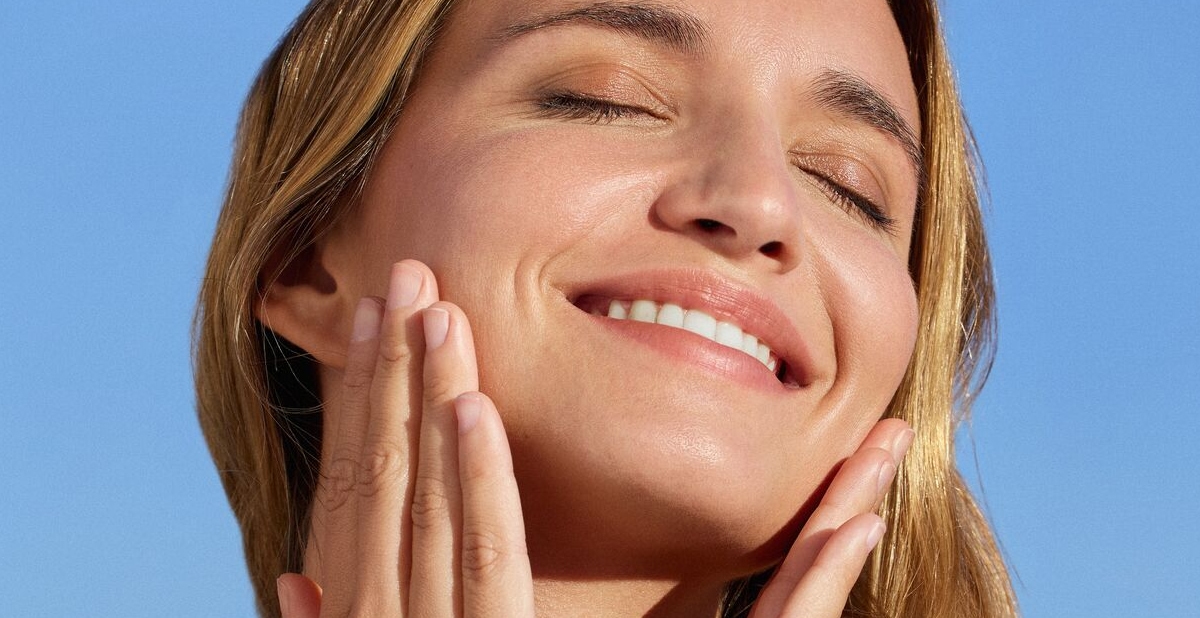
Through the years, rain or shine, the best way to give your skin the TLC it deserves is by keeping it safe. And sunscreen is your trusty ally along the way. Because happy skin is healthy skin, and healthy skin is beautiful.
Reference:
*Data on file. ISDIN, 2025.
Naidoo, K., Birch-Machin, MA. Oxidative Stress and Ageing: The Influence of Environmental Pollution, Sunlight and Diet on Skin. In Cosmetics (2017): 4, 4.
https://www.aad.org/public/everyday-care/sun-protection/sunscreen-patients/sunscreen-faqs


